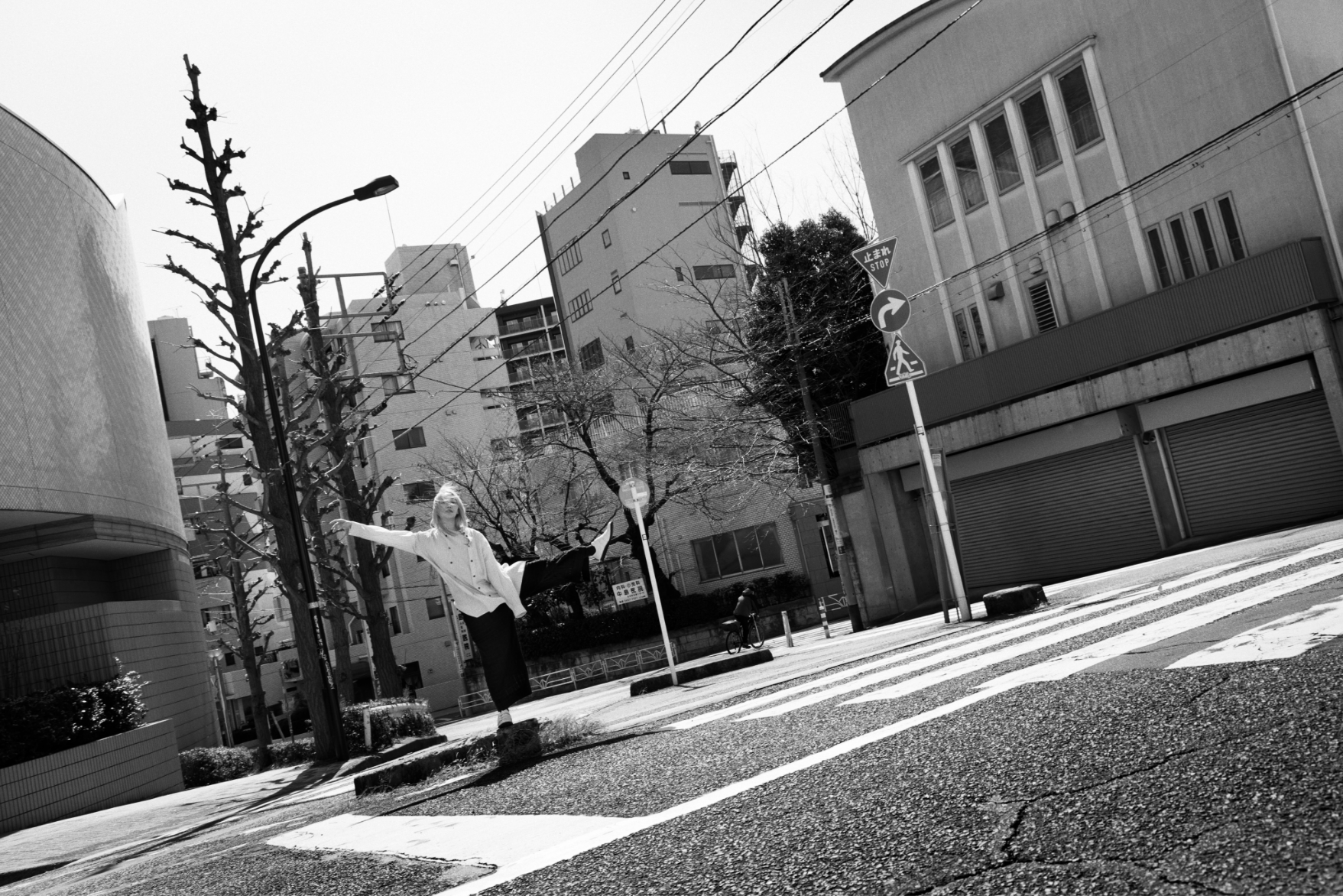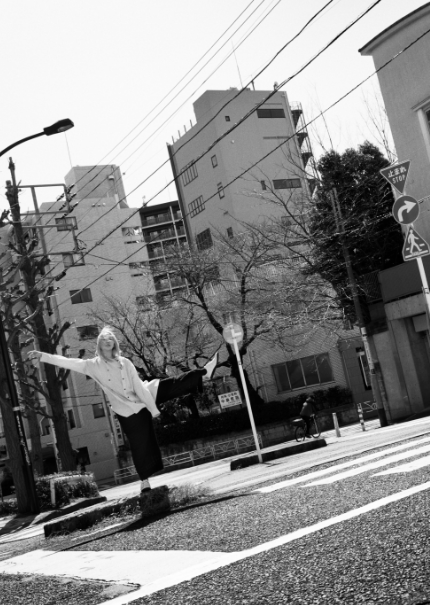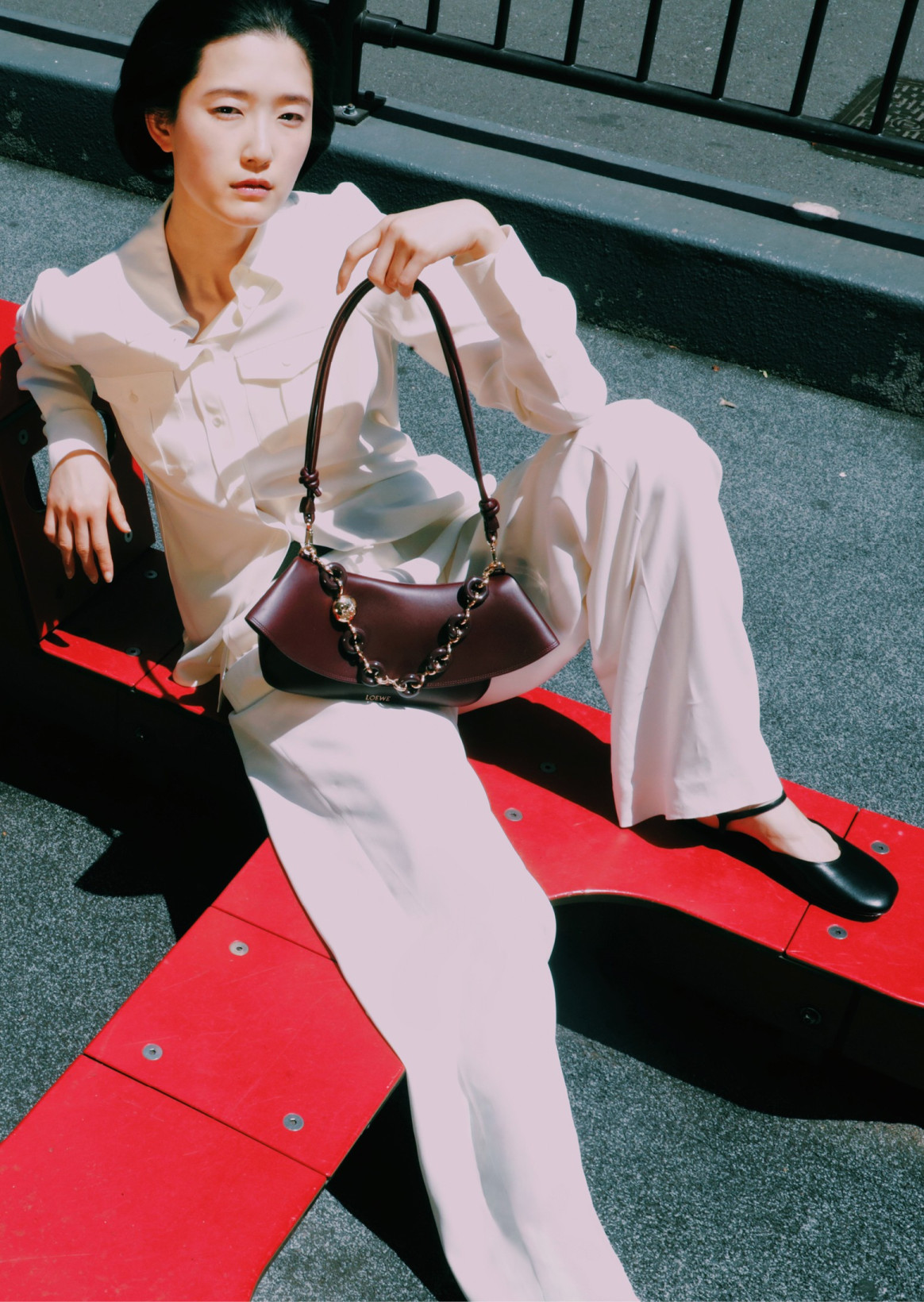- Photo
- Kazumi Kurigami
- Text
- Hirofumi Kurino
- Director
- Sato Takayoshi (OGYA inc)
- Stylist
- Keisuke Baba
- Model
- YACO, Jun Niioka(BARK IN STYLE)
In Shibuya, six brands that inherit Yoji Yamamoto's philosophy will gather.
Y’s、Y’s for men、discord Yohji Yamamoto、LIMI feu、Ground Y、S’YTE。
Each of them speaks “Yoji Yamamoto DNA” in different languages, creating a presence in Shibuya PARCO.
The legendary photographer Kazumi Kurigami projected the tranquility and tension created by clothes dressed in the background of the city.
The moments between fashion and city, between people and time, are deeply burned by his eyes.
Hirofumi Kurino talks about the memories and relationships behind the landscape from the perspective of "towns, people, and things."
This record, which overlaps photographs and words, is a testament to a "complicity relationship" that arises when clothes connect with cities.
Six brands inheriting the philosophy of Yohji Yamamoto are gathering in the city called Shibuya.
Y's, Y's for men, discord Yohji Yamamoto, LIMI feu, Ground Y, S'YTE.
Each expresses the "Yohji Yamamoto DNA" in a different language, together creating a singular presence within the space of Shibuya PARCO.
What legendary photographer Kazumi Kurigami captures is the quiet tension emanating from garments worn against the backdrop of the city. Moments where fashion and the city and where people and time intersect are deeply imprinted in memory through his gaze.
Hirofumi Kurino, meanwhile, speaks from the perspective of "city, people, and things" about the memories and relationships that lie behind those scenes.
This record, in which photographs and words overlap, stands as evidence of a certain "complicity" that arises when clothing connects with the city.
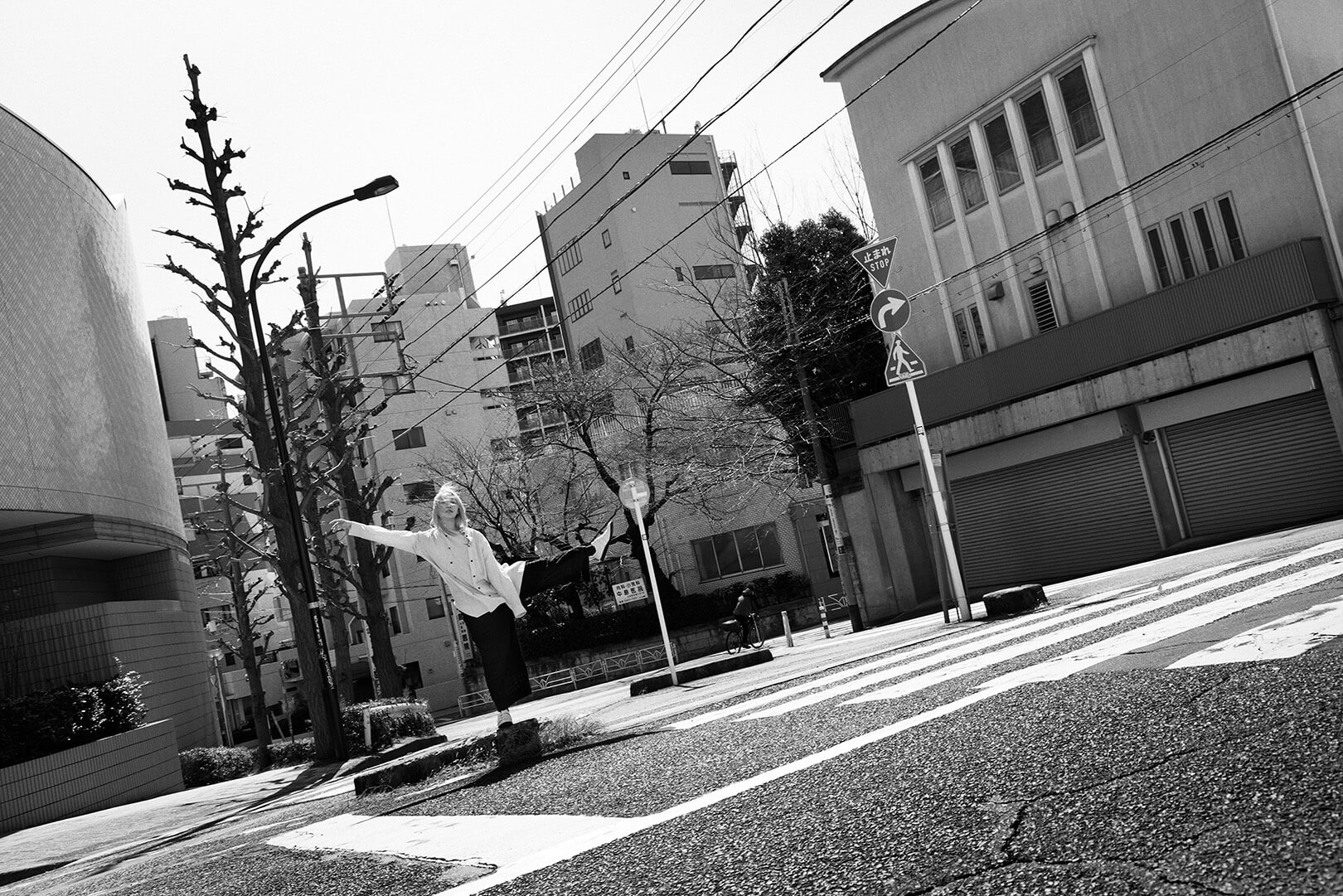 Y’s
Y’s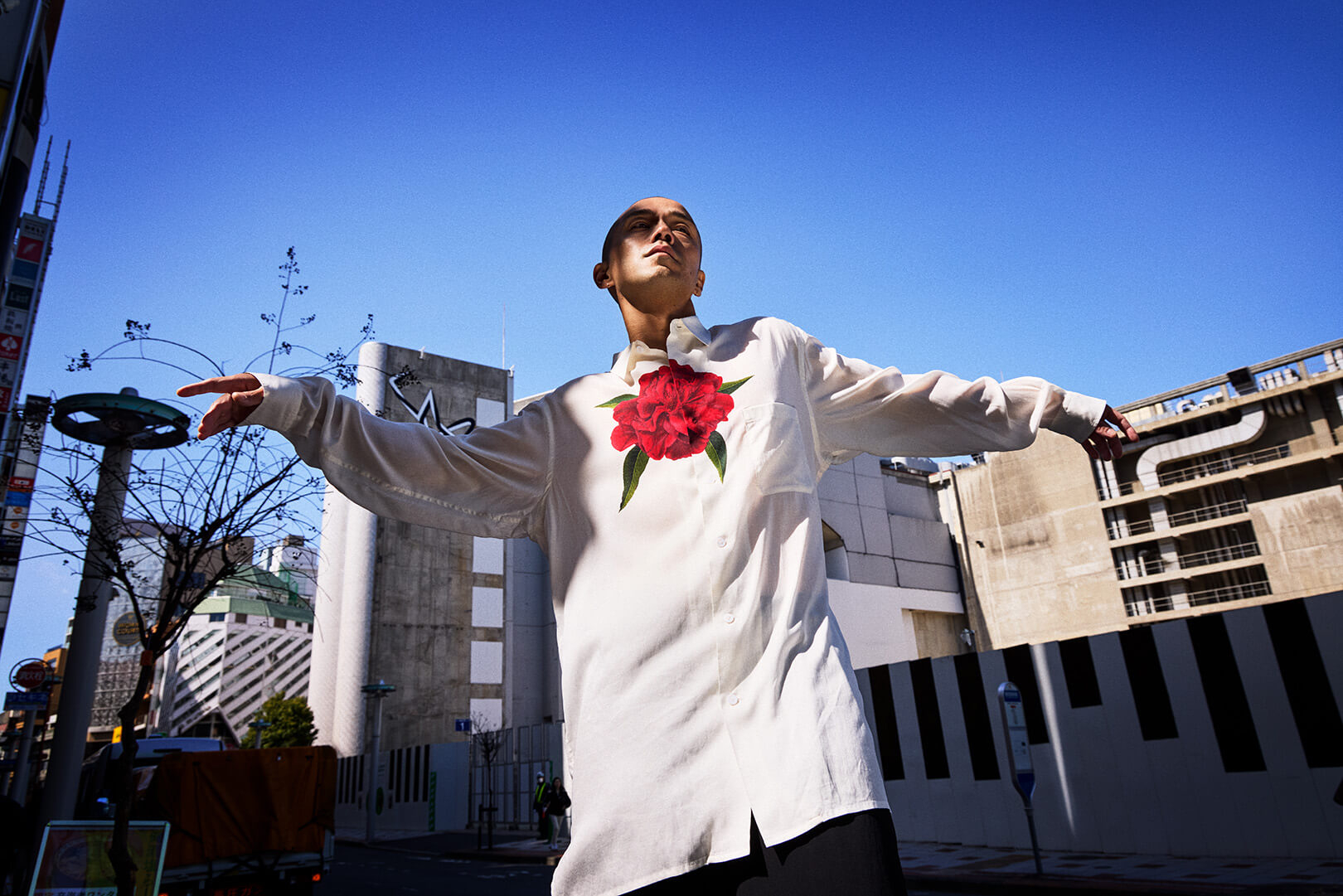 Y’s for men
Y’s for menPeople, towns, and things
People make a town.
"City" has been established as a place for people to gather, live, exchange things and ideas. At the same time, it can be said that "one" will be created by the town.
At least, it is no exaggeration to say that I (Hirofumi Kurino, 70s) was raised by the town.
I start with personal content not because I want to talk about personal history. However, I believe that telling the experience as a 'participant' is effective in this manuscript.
In the first place, my mother (1927-2010) was born and raised in Shibuya. Her mother, who was a movie-loving girl, lived in an area where she heard the start bell ringing and went out of the house in time for the screening. My mother often took me to a movie theater as an elementary school student. I naturally learned how to ride a train and buy tickets for movies, and since my mid-teens, I started attending a masterpiece theater in Shibuya alone.
I think the entrance fee was 300 yen. You can get to Shibuya from Shimotakaido for 30 yen for a child discount on the Setagaya Line. It took a lot of time.
When I woke up to music, I bought a record in Shibuya, and started to go to a rock cafe where there were several at the time. People meet people, and that's the role played by the city. The face I met was also seen at the Hibiya Outdoor Music Hall (aka Yaon), and I was helping with the rock concert at some time. It was Shibuya that I walked with a concert poster on my own. I opened an English textbook at a rock cafe and finished my homework. I became a high school student because the distance between the schools and teachers who managed to put protrude like me in the box was widened. The town grows people.
Eventually, I became more interested in clothes and went to buy clothes in town. The object of the clothes I cared about went from the previous jeans and T-shirts to the clothes that were designed. At that time, it was mainly directly managed stores that sold so-called 'designer brands' clothes, but the existence of 'fashion building' emerged.
People, city, and things
A city is made by its people.
A city comes into being as a place where people gather, live, and exchange things and ideas. At the same time, it can also be said that people are made by the city.
At the very least, I (Hirofumi Kurino, in my 70s) can say I was raised by the city.
I don't begin with a personal story in order to share my biography. But I do believe that recounting my experiences as a "participant" is meaningful for this text.
To begin with, my mother (1927–2010) was born and raised in Shibuya. She was a girl who loved movies, and apparently lived in an area where "she could leave the house after hearing the bell signaling the start of a film and still make it to the theater on time." She often took me, an elementary school student, to the cinema. I naturally learned how to ride the train and buy movie tickets, and by my mid-teens I had begun going alone to Shibuya's repertory cinemas.
I believe admission was 300 yen. The train fare was 30 yen with a child's discount on the Setagaya Line, which got me from Shimotakaido to Shibuya. It took quite a bit of time, though.
Soon I became immersed in music, and I began buying records in Shibuya and frequenting rock cafés, of which there were a few at the time. Cities are places where people encounter each other—this is one of the roles they have long played. I began to see the same faces I'd met at those cafés at the Hibiya Open-Air Concert Hall (commonly called "Yaon"), and before I knew it, I was helping out at rock concerts. I pasted concert posters around the city without permission—also in Shibuya. I did my homework at rock cafés, English textbook open. As the distance between myself and teachers or schools trying to force misfits like me into boxes grew, I became a more precocious high school student. Cities shape people.
Eventually I developed an interest in fashion, and I began venturing into the city to buy clothes. My attention shifted from jeans and T-shirts to designer clothing. At that time, so-called "designer brands" were sold mainly in directly operated stores, but then came the rise of "fashion buildings."
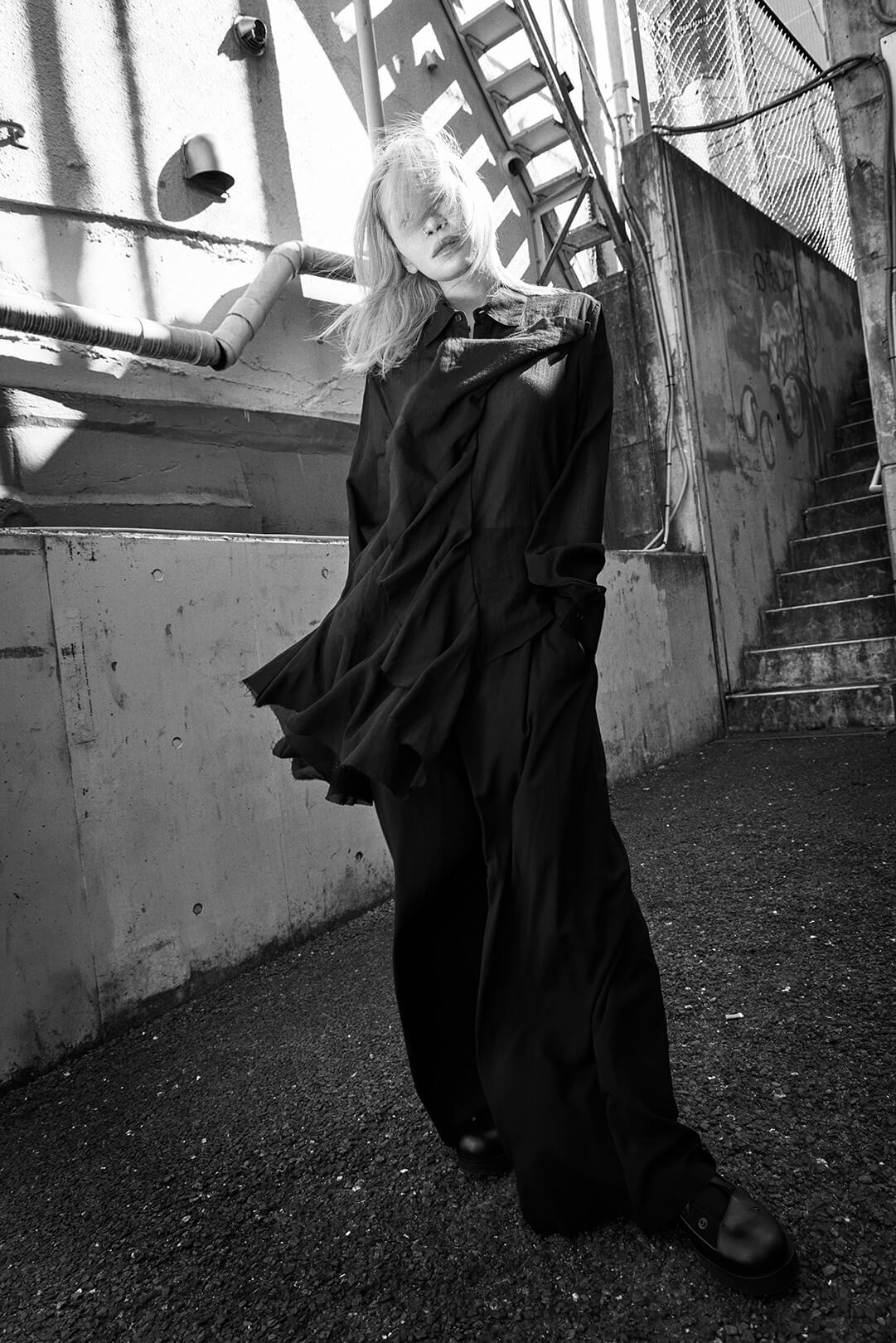 LIMI feu
LIMI feu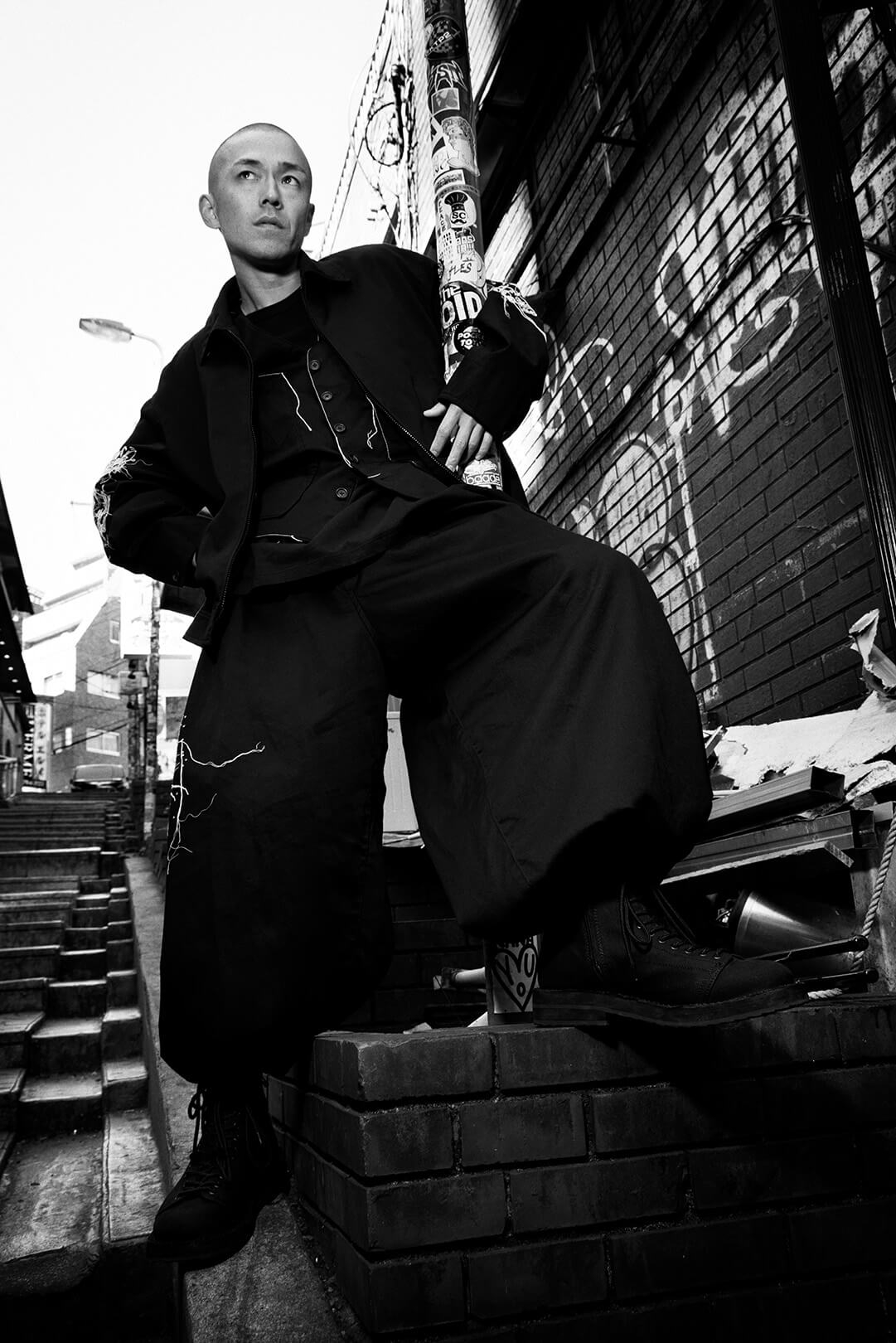 S’YTE
S’YTEThe era has shifted from the 1970s to the 1980s, and Japan, a defeated country, will be revived and will be on the path to economic powers and consumer powers. When my style icon was David Bowie in 1973, PARCO opened in Shibuya and became a mecca with designer brands in the 1980s.
Yoji Yamamoto's collection had a different sense of beauty from the Japanese designer brand that debuted in the world at the same time.
It may be said that it is the opposite of the concept of clothing that has been inherited in Western Europe.
If the emphasis of the body or the sexual element, or the expression of the ‘class’ to which the start belongs, is of Western origin.
Yojiyamamoto's fuku is the fuku of 'cucking the body'.
However, clothes with a "self" that appear not to assert itself loudly but gives a solid presence.
There are Japanese stoicism and the late Senshuality among foreign journalists and buyers.…More than anything, I found a start.
Yoji Yamamoto was evaluated as a fusion of 'Japanese' aesthetic sense and 'Western' couture.
Dress with "squirt" that is not simple or tasteless and odorless. Or the secret sensuality of 'shadows' was perceived there.
Yoji Yamamoto's clothes were favored by Western actors and artists, but in Europe and the United States they were forced to put themselves in a Western social scene, but the aesthetics of them, especially Yoji Yamamoto, resonated deeply with the audience who did not want to wear soires, dresses and tuxedes. Wim Wenders and Pina Bausch not only wore Yojiyamamoto, but also injected his soul as an expressionist.
Or the late Carolyn Besett Kennedy, wife of JF Kennedy Jr. and fashion leader. I remember her simple wearing Yojiyamamoto. She can be said to be the original Quiet luxury, but Yoji Yamamoto's clothes also belong to that context.
It is not limited to Yoji Yamamoto, but wasn't the fashion of a Japanese designer hiding or decorating 'people', but wasn't it something that could represent one of them from wearing it? In other words, it’s not ‘thing’ here. We have seen how people sublimated things into beings more than things. Or fuku visualizes people's charm (something they don't even know). People grow fuku, but fuku also grow fuku.
It is the photographer who sees it and shoots it on the video.
As the era shifted from the 1970s to the 1980s, Japan, once a defeated nation, recovered and followed the path to become an economic and consumer superpower.In 1973, when my style icon was David Bowie, PARCO opened in Shibuya, and by the 1980s it had become a mecca for designer brands.
Yohji Yamamoto's collections, possessed a different aesthetic than other Japanese designers which debuted on the global stage around the same time.
One could say it stood in stark contrast to the fashion sensibilities inherited in the West.
If Western clothing was about emphasizing the body and sexuality, or manifesting the social class of the wearer,
Yohji Yamamoto's clothing was about "wrapping the body."
Clothing that, while not loudly asserting itself, exuded a firm presence and sense of self.
Foreign journalists, buyers—and above all, the wearers themselves—began to recognize in his garments a uniquely Japanese stoicism and sensuality.
Yohji Yamamoto was seen as a fusion of Japanese aesthetics and Western couture.
The clothes were not decorative, but had a certain "sway" to them that was neither simple nor bland. There was a hidden sensuality to them that was reminiscent of "In Praise of Shadows."
His garments, favored by Western actors and artists, resonated deeply with those who, though compelled to participate in Western social settings, did not wish to wear typical soiree dresses or tuxedos. Wim Wenders and Pina Bausch did not merely wear Yohji Yamamoto; they imbued the garments with their spirit as artists.
Also remembered is the late Carolyn Bessette-Kennedy, wife of John F. Kennedy Jr. and a noted fashion icon. Her simple, elegant way of wearing Yohji Yamamoto remains etched in memory. She could be considered the originator of "quiet luxury," and Yohji Yamamoto’s clothing certainly belongs within that context.
Not limited to Yohji Yamamoto alone, Japanese designer clothing may not be about hiding or adorning a person, but rather about expressing their essence through the act of wearing. That is to say, here, clothing is not simply a "thing." We have witnessed how people elevate garments into something more. At times, clothing can even make visible a person's appeal—something they themselves may not recognize.
People develop clothing, but clothing also develops people.
And it is the photographer who witnesses this and captures it in images.
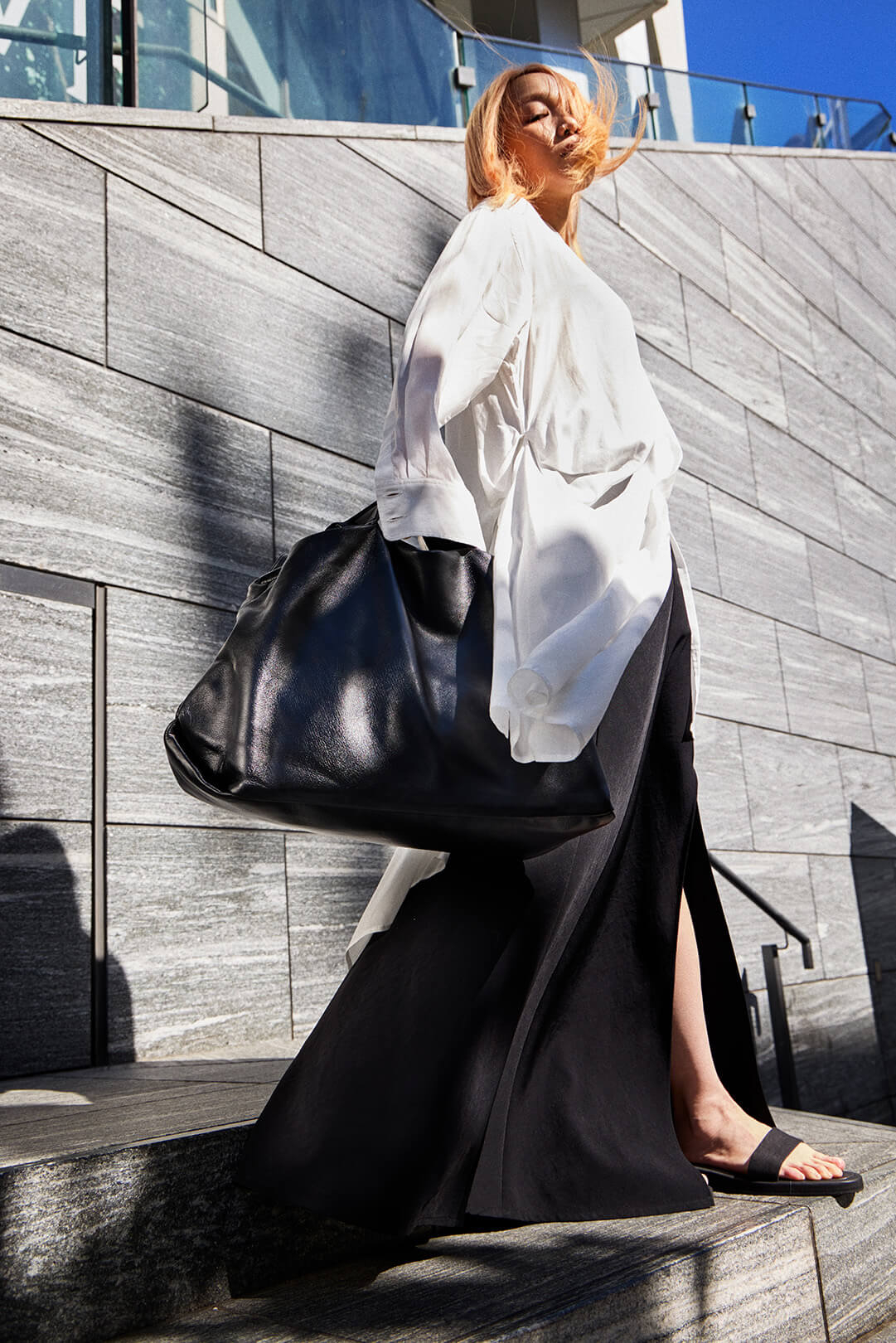 discord Yohji Yamamoto
discord Yohji Yamamoto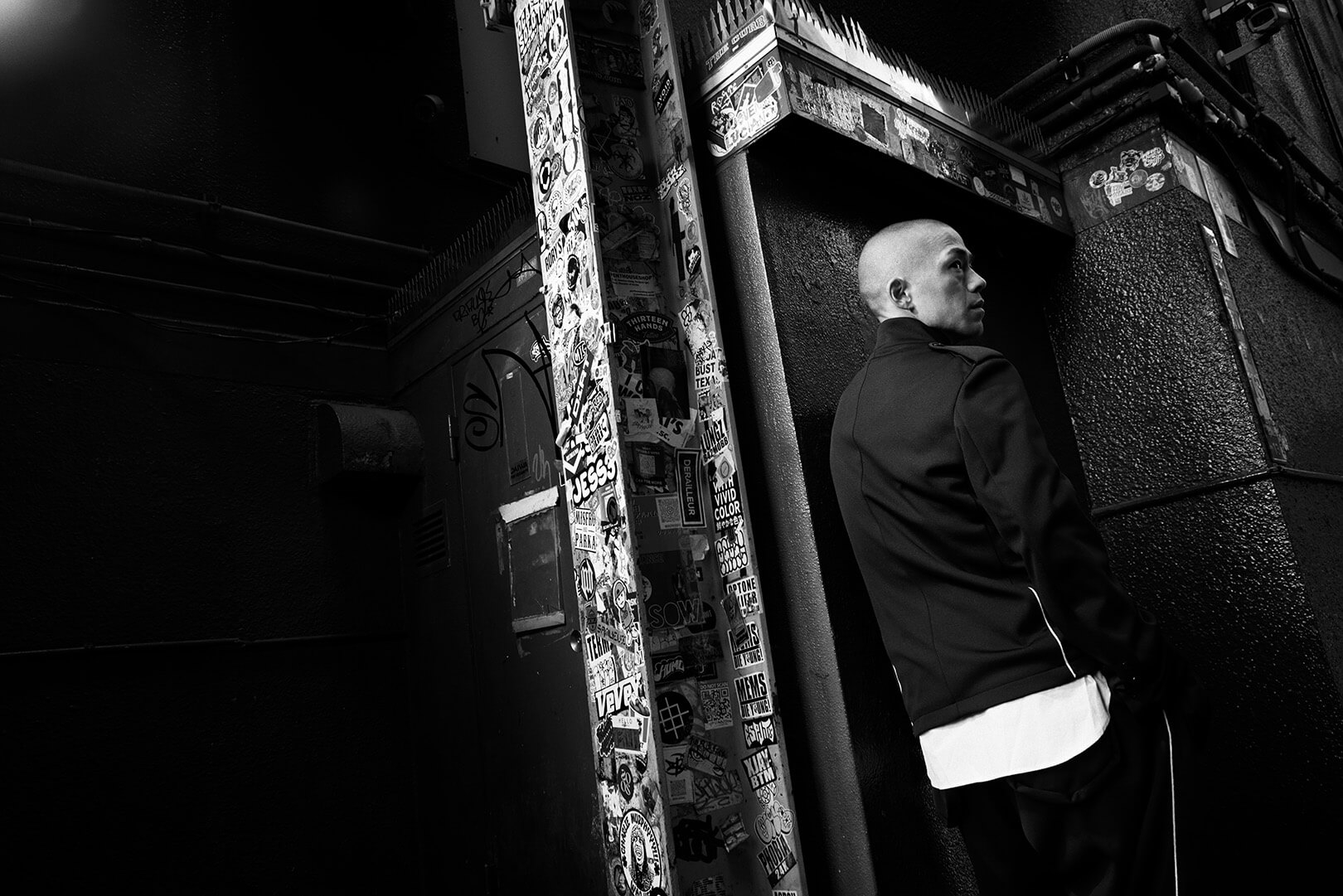 Ground Y
Ground Y